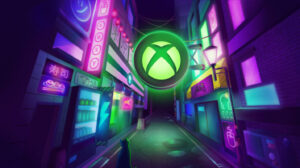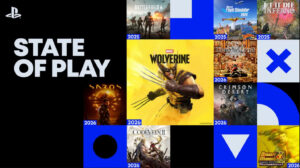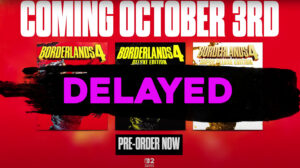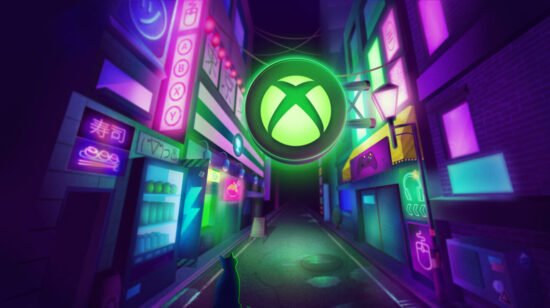GOG Returns to Its Roots: “Game Preservation is a Continuous Responsibility”

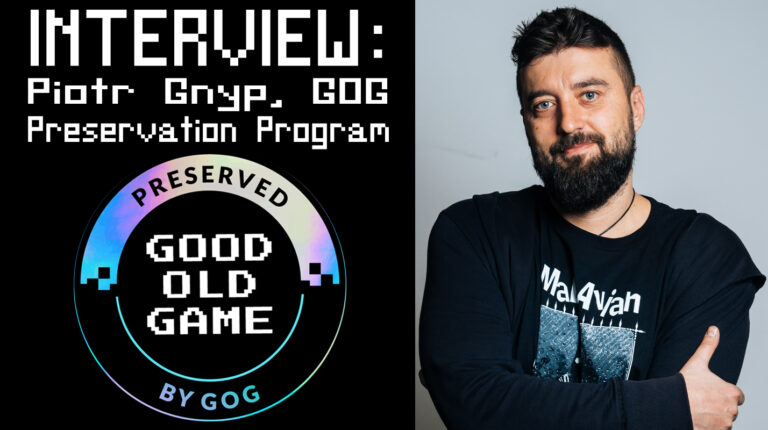
INTERVIEW – GOG itself needs no introduction, but readers may not be familiar with the company’s Preservation Program. This was officially launched late last year, and is GOG’s concerted attempt at game preservation.
I recently spoke, via email, with Piotr Gnyp about the Program, its aims and values, and what gamers can expect as it continues to focus on preservation efforts.
What’s the criteria involved in choosing a game for the GOG Preservation Program? How much does perceived cultural impact affect a game’s chances of being added?
There’s no fixed checklist, but a few things matter a lot.
We look at cultural impact: was the game important? Is it still loved? Is there a community that remembers it? One of our key tools here is the GOG Community Wishlist – recently relaunched as the Dreamlist. It’s packed with memories, emotions, and thousands of requests from players telling us exactly what they want brought back.
Age also plays a role. Internally, we treat games that are 10 years old or more as “classics” – but that’s not a hard rule. Sometimes we act faster, especially if something big happens – like when Monolith, the studio behind F.E.A.R., was shut down. We knew we had to step up. Preservation isn’t just about nostalgia – sometimes, it’s about timing.
Of course, identifying who owns the rights is just step one. After that, there still needs to be a business case. We have to show the rights holder that bringing the game back is worth their time – that there’s demand, and there’s value in making it happen.
Once we clear the legal and business hurdles, our tech team gets to work and starts the process of restoring the game to modern standards.
I’ve noticed there are a few titles that are available elsewhere, such as the recently added Stars Wars Battlefront. What’s the deciding factor that means something like this gets added to the Program over another game?
There’s no big secret here. Sometimes, timing is everything.
When we put together GOG Preservation Program batches, we often align them with cultural moments – like May the 4th for Star Wars, or Warhammer Skulls for games from the Warhammer universe. It’s a way to stay relevant, increase visibility, and meet players where their attention already is.
But that’s just one part of the decision-making process. The core factors – rights, demand, historical value – remain the same as we discussed earlier. On top of that, we always evaluate the technical state of the game and our ability to keep it running smoothly in the long term. In some cases everything is fine and the game can be added without any changes and sometimes we spend a month (or more) on fixing it, like we did with Silent Hill 4: The Room. You can check everything we did on each games product page, on the changelog section
Cultural context helps us shine a brighter light on what we’re already committed to preserving – but we only move forward if we’re confident we can support the game properly.
When you say that “games have been made compatible with modern systems,” how does this work? For example, does this involve any kind of emulation or are you able to go into a game itself to tweak the code?
It really depends on the game.
In some rare cases, we’re granted access to the source code – which gives us room to fix bugs, tweak systems, or add quality-of-life improvements directly. But most of the time, we don’t get that luxury. These are old binaries, sometimes undocumented, so we rely on reverse engineering, decompiling, and a fair bit of creative detective work. We find anchor points in machine code and work our way up to the functions we need to adjust.
Alongside that, we’ve built our own internal tools – like our custom DirectX wrapper – and we also rely on open-source solutions like DOSBox to emulate older environments. With these, we’re able to improve compatibility and even add features that didn’t exist back then: controller support, alt-tab stability, multi-monitor setups, high resolutions, cloud saves.
Our rule is simple: we modernize without rewriting history. These aren’t remasters. We preserve the original experience – just make sure it runs smoothly on today’s hardware and meets the expectations of a modern player.
Following on from this, the claim that “the GOG version of this game is the best anywhere” is a bold one. I understand the Program fixes bugs and adds bonus content not typically included with other versions of a game, but can players expect any other additions or fixes? For example, do any of the Program’s titles include remastered graphics?
Let’s be clear: we’re not remastering games. That’s a different discipline – it usually requires full dev teams, access to source assets, and a publisher’s greenlight. What we’re doing is preservation, which means making sure the original version runs smoothly and reliably on modern hardware, without altering the core experience.
That said, when we can go further – we do. Take Silent Hill 4: The Room, where we worked closely with Konami to improve stability and ensure PC players could finally experience all seven hauntings – something that wasn’t previously possible on this platform. Or Capcom’s classics like Resident Evil and Dino Crisis, where we were asked to clean up long-standing bugs and polish the user experience.
We also strive to deliver the most complete editions possible – bundling in regional extras, concept art, original manuals, and other materials that were previously scattered or missing entirely.
So yes, we sometimes say “the best version” – because in nearly all the cases, it really is. That does not mean that the same version is not available anywhere else. But what is important, and we cannot say that officially on the product page, that this is often a version that is better than anything else available. It’s the version that runs out of the box, doesn’t need fan patches, includes the extras, and still works even if official support ends. That’s the kind of long-term value and stability we believe in.
When GOG launched in 2008 it was focused on ‘good old games’ but of course from 2011 it started to add new titles to its library too.
Why did it take until November last year for the GOG Preservation Program to appear? Is this something that has always been on the go in the background? And is this apparent renewal of interest in old games a response to modern publishers striking deals with other platforms over gog.com?
Game preservation has been in GOG’s DNA since day one. The company was literally founded after one of our team members visited a game store in New York and saw classic titles – beloved, influential games – stacked on shelves like expired goods. That moment sparked the idea for a digital platform that would treat these titles with care, make them accessible again, and ensure they worked on modern hardware. That’s where the name “Good Old Games” came from.
Of course, over the years, as we started adding newer titles and expanding our offer, that original message became a little diluted. It was still there – but quieter. What changed was a simple realization: even games we had released only a few years ago weren’t working the way we wanted them to anymore. They launched, sure – but the experience wasn’t up to our standards. That’s when it hit us: game preservation isn’t a one-time act. It’s a continuous responsibility. Something you need to maintain and revisit – not just archive and forget.
That led to the creation of the GOG Preservation Program in November 2024. It wasn’t born out of competition or reaction to what others were doing. It was about holding ourselves to a higher standard – and making sure we live up to what GOG was always meant to be. Since then, we’ve made not just a renewed technical commitment, but a renewed communication effort. You’ll see us talk more clearly and openly about what we preserve, why it matters, and how we do it.
In January 2025, we took another step forward by joining EFGAMP – the European Federation of Game Archives, Museums and Preservation Projects. This marked the beginning of deeper collaborations with cultural institutions, museum professionals, and public bodies, including national governments and the European Union. Together, we’re working to safeguard our digital cultural heritage and ensure that games – as a vital part of modern culture – are preserved and respected for generations to come.
I recently spoke with RockmanCosmo, a games preservationist who mentioned that there’s an unfortunate “us versus them” mentality within game preservation circles, especially on the side of ‘niche’ groups, who feel that mainstream game preservationists ignore them or simply don’t take them seriously.
Does the GOG Preservation Program work with any other groups, or have you ever encountered any kind of resistance to your work? If you don’t or haven’t, are there any plans to join forces with other game preservation organisations?
That’s genuinely unfortunate to hear – and we fully understand the frustration. But it’s worth remembering that GOG, while rooted in a clear preservation mission, also operates as a business. That means our approach must align with commercial realities: licensing, scale, and the technical feasibility of keeping games alive for a broad audience.
At the same time, we’re strong believers that preservation isn’t just about archiving files – it’s about keeping games playable. What we call modern preservation means ensuring these titles run smoothly on today’s hardware, adding quality-of-life features (like controller support, high resolutions, or alt-tab stability), and making sure they’re accessible to players who might be discovering them for the first time.
But we also know this work can’t happen in isolation.
In January 2025, we became members of EFGAMP – the European Federation of Game Archives, Museums and Preservation Projects. That marked a major step for us in formally joining the cultural and institutional side of preservation. Since then, we’ve expanded collaboration with museums, researchers, and even EU-level discussions on safeguarding digital cultural heritage.
We’re also doing what we can to help unify the broader preservation ecosystem. Last year, we released a public retrospective video showcasing key preservation milestones across the entire industry – not just GOG’s.
And we try to show up where it matters. For example, we recently gave a talk at Digital Dragons, one of Europe’s most respected game industry conferences, focused entirely on preservation – its challenges, its potential, and the urgent need for shared responsibility. We’d love to do more of that. Preservation is too important to be fractured.
Aside from the general gaming public’s lack of knowledge concerning game preservation, what would you say is the biggest hurdle you have to overcome as a games preservationist?
Beyond general awareness, the biggest hurdle is legal and business-related – by far.
Many of the games we try to preserve come from a time when no one thought about long-term availability. Contracts were vague. Rights were scattered across companies, regions, or even individuals. Source code was often lost. Documentation? Gone. Sometimes, just figuring out who owns what can take months – or years.
Of course, that’s changing. Game preservation is no longer seen as just cultural work. It’s becoming a serious business strategy. One that reduces risk, extends a product’s lifecycle, and opens up new revenue opportunities. But we’re still dealing with the consequences of an industry that, for decades, wasn’t thinking that way.
How many of the games currently in the GOG Preservation Program were lost, or in real danger of being lost, before you found them? What’s your ‘Holy Grail’ of lost games?
Right now, the GOG Preservation Program includes around 200 titles – and we hope to nearly double that number by the end of 2025.
How many of them were in real danger of disappearing? Most. According to the Video Game History Foundation, 87% of games released before 2010 are no longer commercially available. That’s the scale of the challenge.
During our recent talk at Digital Dragons, we ran a small experiment. We took issue 5/95 of Secret Service – a legendary Polish gaming magazine from nearly 30 years ago – and checked how many of the games reviewed in that issue were still playable today. The result? 70% were gone. And of those still available, GOG was responsible for 80%.
As for our Holy Grail? Just look at the top 20 of our Dreamlist. These are the games players all over the world are asking us to bring back – and we’re doing everything we can to make that happen.
How do you explain the idea of game preservation to someone who doesn’t really understand its importance? What can they do to help?
Imagine not just books vanishing – but entire libraries. Not because of censorship or disaster, but simply because no one bothered to back them up. A contract expired. A server was shut down. Someone forgot to click “save.” That’s what the world of games looks like if we don’t take preservation seriously.
Game preservation isn’t just about keeping code alive. It’s about safeguarding emotions, memories, and cultural legacy. Games teach, move, inspire. They spark relationships. They’re the seed for films, novels, music – and increasingly, the foundation of modern culture itself.
When a game disappears, it’s not just data that vanishes.
It’s the moment someone first played Another World, Planescape: Torment, or Silent Hill 2 and thought: “I want to make games.” Moments that later become studios, engines, mechanics – entire schools of design.
Just look at today’s biggest releases. So many of them are remakes, remasters, sequels – they only exist because the originals survived. Innovation often begins with iteration. Without the past, there’s no future. For games to evolve, they need to be available. Playable. Understood.
Game creators – like authors or filmmakers – want their work to outlive them. They want someone, someday, to write a book about their studio and still be able to play what started it all. Preservation isn’t nostalgia. It’s infrastructure. It gives games a second life. And a third.
So what can you do?
– Support re-releases done with care.
– Add your favorite games to our Dreamlist, vote, share your stories
– Speak up. Say out loud that games deserve to endure.
Because if we don’t save them – who will?



